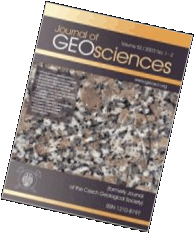 Export to Mendeley
Export to MendeleyEditorial
Foreword to the special issue arising from the international conference TUR2021
Journal of Geosciences, volume 67 (2022), issue 2, 71 - 72
DOI: http://doi.org/10.3190/jgeosci.360
The contributions to this special volume of “Journal of Geosciences” are essentially based on talks and posters presented at the 3rd International Conference on Tourmaline (TUR2021), which was held from September 9 to 11, 2021 in Portoferraio, Elba Island, Italy (Henry et al. 2021).
Elba Island plays a particularly important role for tourmaline not only scientifically, but also as the cradle of the tourmaline scientific community. The idea to organize the 1st International Conference on Tourmaline in Nové Mĕsto na Moravĕ, Brno, Czech Republic (1997) was born during the field trip on the Elba Island after the 1994 IMA meeting in Pisa from a group of mineralogists from Italy, Canada, USA and Czech Republic (including Federico Pezzotta, Frank Hawthorne, Matt Taylor, Milan Novák). Milan Novák recalls that he and Frank were sitting on seats close to a gelateria in Sant’Ilario, and maybe stimulated by their surrounding of fantastic tourmaline localities, the idea of a conference dedicated to tourmaline was born.
The 2021 edition of the Tourmaline conference was moderately affected by the subsiding COVID-19 pandemic and resulting vaccination restrictions that made it very difficult for participants from outside the EU to travel to Italy. Conference organizers successfully overcame travel difficulties by a hybrid (in-person + online) regime of the talks; this made them globally accessible, even though some presenters had to wake up very early in the morning or be online late at night. Despite the difficulties, the conference brought together 78 attendants from 12 countries, including 27 online participants, and resulted in fruitful discussions on diverse topics in boron mineralizations.
Post-conference field trips both to classical and new Elba tourmaline localities showed the large diversity of tourmaline-bearing mineral assemblages and tourmaline compositions on Elba. The field-trip guidebook was published as a special issue of Rivista Mineralogica Italiana (no. 3-2021) focused on Elba Island.
The special issue in your hands contains a diverse spectrum of tourmaline-related topics and delivers a range of remarkable papers pushing the boundaries of tourmaline-related research.
The paper “Perspectives on premetamorphic stratabound tourmalinites” by John Slack provides a comprehensive overview on tourmalinites, their diverse origins and geochemical characteristics. In addition, a unique review paper is presented by Paul Rustemeyer, who summarized his research on the inner architecture of tourmaline crystals in thin slices. The paper provides fundamental insight into a range of growth zoning features of tourmaline, which is the prerequisite for the interpretations of chemical and isotopic variations in mineralogical and geochemical patterns observed in zoned tourmaline.
An optical and structural study of a triclinic dimorph of schorl from Langesundsfjord (Norway) is presented by Fernando Cámara and co-authors; the paper shows a single crystal with trigonal-uniaxial core and triclinic-biaxial rim. Tourmaline will not stop surprising us by the wide range of elements it can accommodate in its structure. The study on Ni- and Fe3+-rich oxy-dravite by Daniela Mauro and co-authors enlarged the compositional space we normally regard in tourmaline-supergroup minerals and discusses the structure and properties of this unique tourmaline.
Paolo Ballirano and co-authors studied the high-temperature stability of Mn-bearing elbaite; their results show that its breakdown at 825 °C is preceded by structural adjustments causing Y,ZLi disorder. For the first time, the γ-LiAlSi2O6 polymorph of spodumene was noted among tourmaline-breakdown products.
Sometimes laboratory studies of exotic compositions are not far from discoveries in nature. Two papers in this issue are perfect examples of such a case. First, the experimental study of Oleg Vereschagin and co-authors presents the first results on the stability of Ti4+- and Sn4+-bearing tourmalines, showing that both elements enter the tourmaline structure favorably at low-pressure conditions. In the second paper, low PT-conditions were also derived by Kristian Drivenes on the first occurrence of Sn-rich tourmalines from Land’s End granite in SW England; multiple tourmaline generations were deciphered based on an outstanding amount of data and high-resolution elemental mapping.
The petrology of tourmaline in meta-evaporite rocks was studied by Barbara Dutrow and Darrell Henry; their study shows that in the sulfate-rich meta-evaporite of the Arignac, tourmaline preserves a record of HT-LP conditions, whereas the surrounding mineral assemblage was subsequently overprinted by retrograde reactions. Tourmaline parageneses in polymetamorphic rocks are rarely simple; this is shown by Peter Bačík et al., who documented a very large textural and compositional variability of tourmaline minerals in tourmalinites from the Gemeric Unit of western Slovakia.
We especially thank Lenka Skřápková, who took care of all essential formatting checks and adjustments of all manuscripts in this issue. We thank the Editorial Board of the Journal of Geosciences and Chief Editor Jakub K. Plášil, who made this issue possible. Finally, we thank all referees for their careful work and devotion in helping papers published in this special issue to achieve the highest quality.
Webdesign inspired by aTeo. Hosted at the server of the Institute of Petrology and Structural Geology, Charles University, Prague.
ISSN: 1803-1943 (online), 1802-6222 (print)
email: jgeosci(at)jgeosci.org


IF (WoS, 2024): 1.3
5 YEAR IF (WoS, 2024): 1.4
Policy: Open Access
ISSN: 1802-6222
E-ISSN: 1803-1943